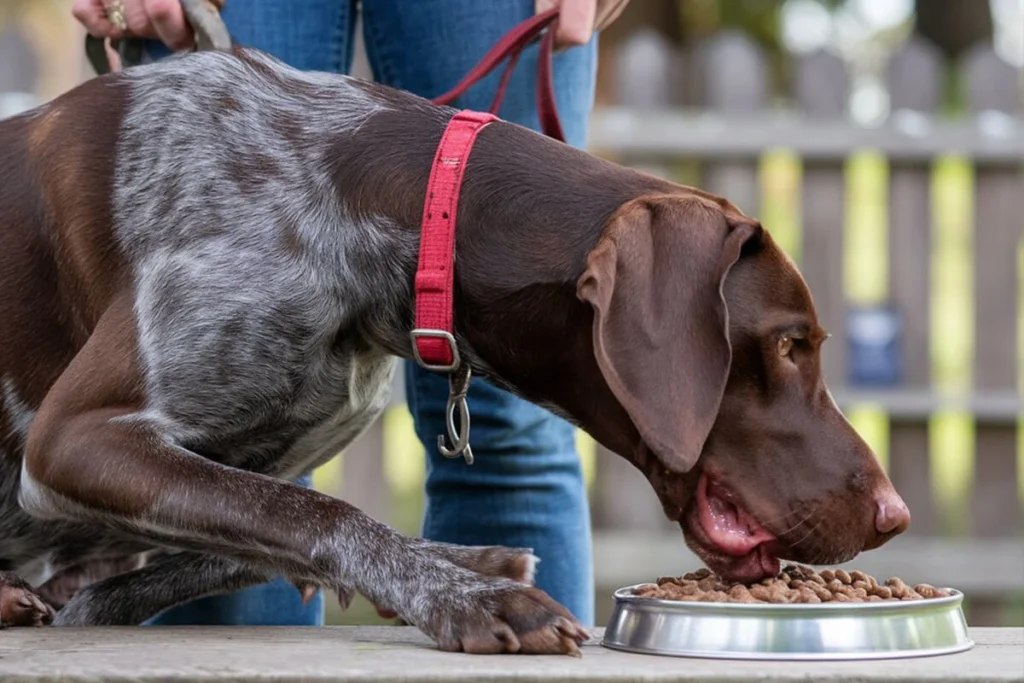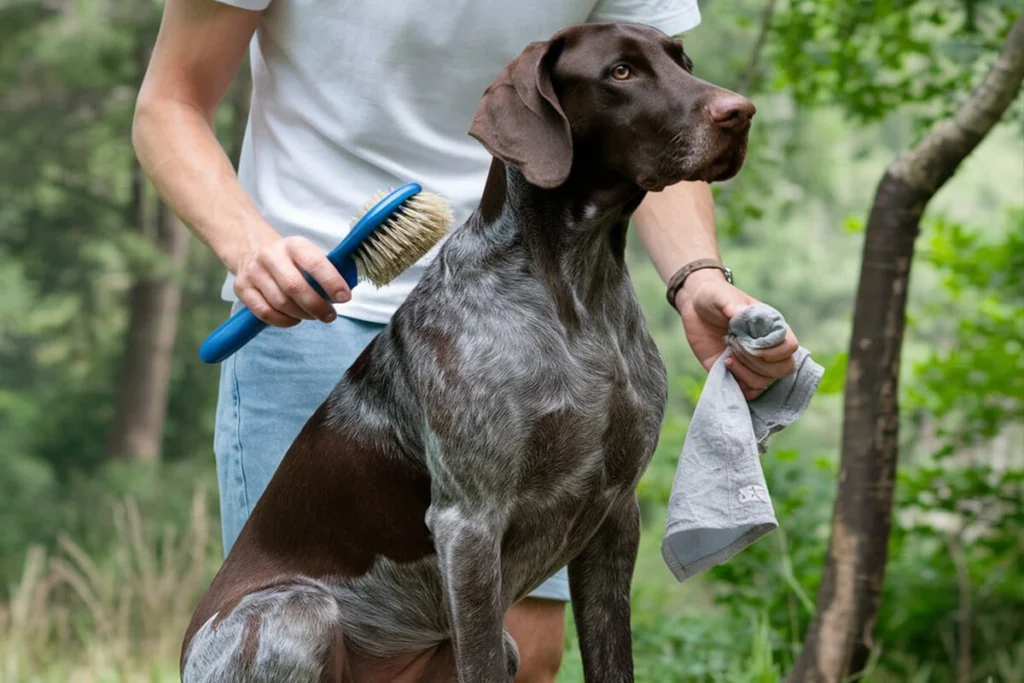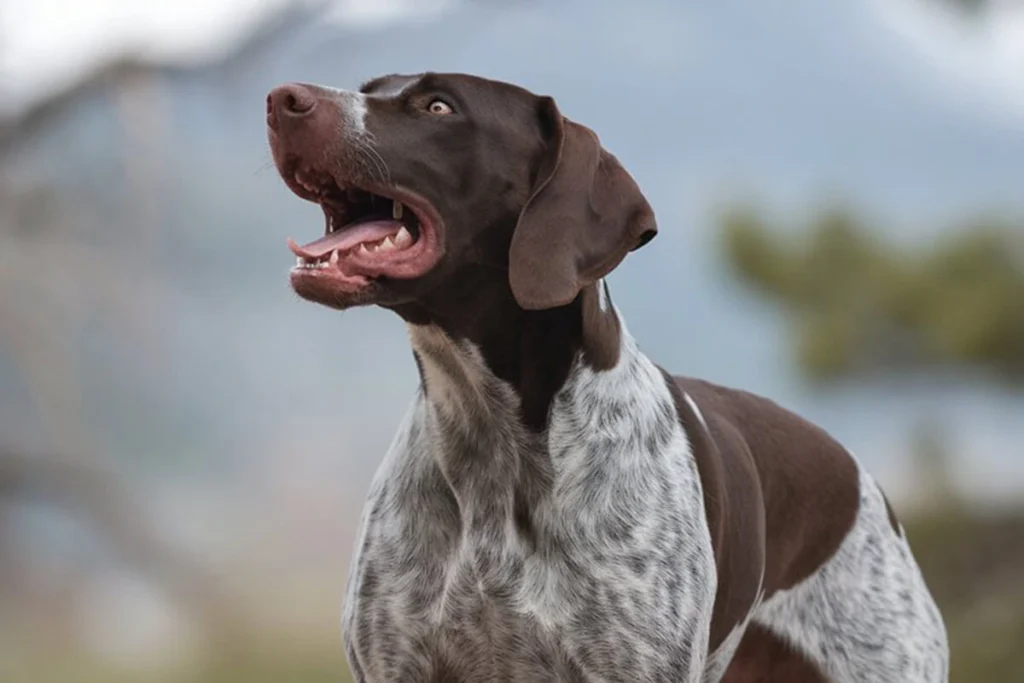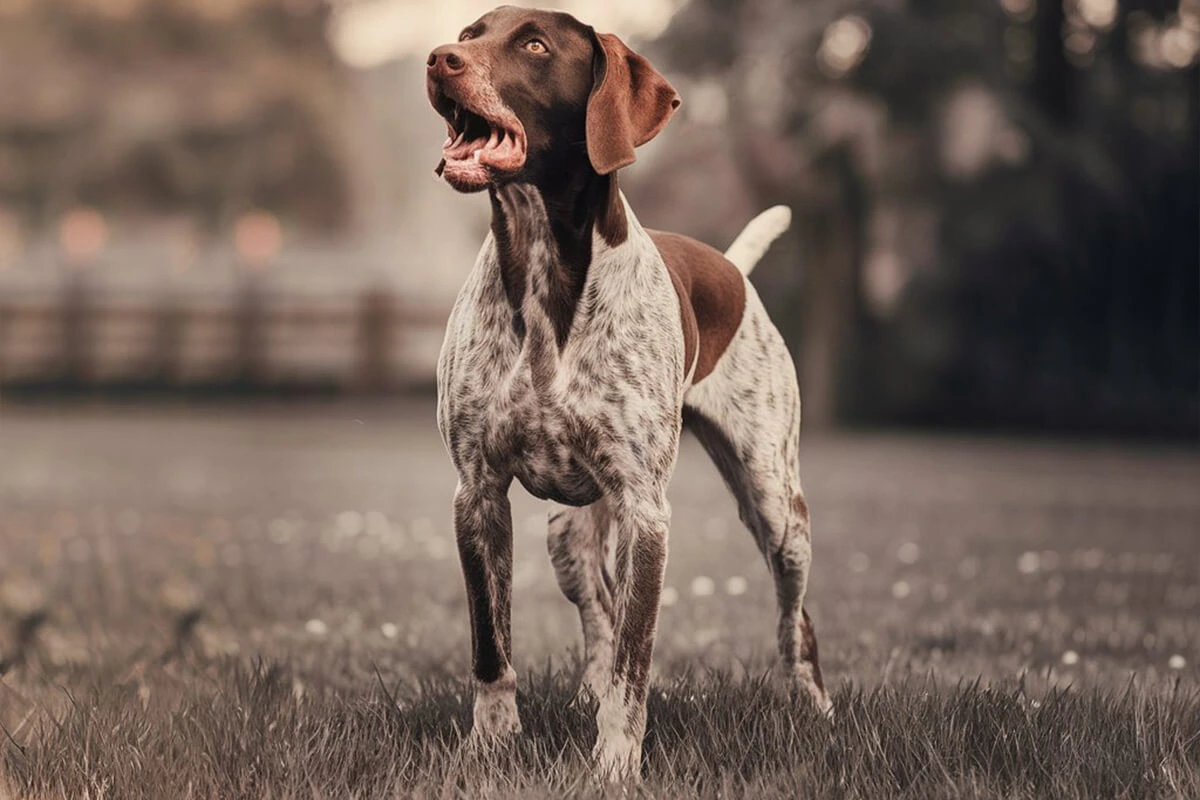The oldest GSP dog is more than just a rarity—it’s a testament to the resilience and vitality of the German Shorthaired Pointer breed. Known for their high energy, intelligence, and affectionate nature, GSPs make incredible companions. However, their lifespan typically ranges between 12 to 14 years, making it remarkable when one surpasses this expectancy by several years. What makes these exceptional dogs live longer than most?
Many factors influence a dog’s longevity, including genetics, diet, exercise, veterinary care, and even emotional well-being. While some dogs are naturally predisposed to longer lives, the right care and environment can significantly extend a GSP’s lifespan. In this blog, we will explore what sets the oldest GSP dog apart, uncover secrets to canine longevity, and provide essential senior dog care tips to help your furry friend live a healthier, happier life. Whether you’re a longtime GSP owner or considering adopting one, you’ll find valuable insights to ensure your dog enjoys the best possible quality of life.
Understanding the German Shorthaired Pointer’s Lifespan
Typical Lifespan of a GSP and What Factors Influence It
German Shorthaired Pointers (GSPs) generally live between 12 to 14 years. Some GSPs may reach 15 or 16 years with proper care, but crossing this range remains uncommon. Several factors play a crucial role in determining a GSP’s lifespan:
- Genetics – A dog’s lineage significantly impacts longevity. GSPs from reputable breeders with a history of long-lived, healthy ancestors have a better chance of reaching old age.
- Diet and Nutrition – High-quality food packed with essential nutrients supports immune health, joint function, and organ performance, all of which contribute to a longer life.
- Exercise and Mental Stimulation – GSPs need daily physical activity to maintain cardiovascular health and prevent obesity, a major factor in premature aging. Mental enrichment through training, puzzle toys, and social interactions also helps keep their minds sharp.
- Veterinary Care – Regular check-ups, vaccinations, parasite prevention, and early disease detection play a key role in extending a GSP’s life. Many senior dogs develop conditions like arthritis, cancer, or heart disease, but early intervention can improve their quality of life.
- Lifestyle and Environment – A stress-free, loving home environment positively affects a dog’s emotional well-being. Dogs that experience less anxiety and receive plenty of companionship often enjoy longer lives.
Comparison with Other Dog Breeds’ Longevity
Compared to other breeds, the German Shorthaired Pointer falls into the mid-range lifespan category. Smaller breeds, such as Chihuahuas and Dachshunds, often live 15 to 20 years, while larger breeds like Great Danes and Saint Bernards typically live only 7 to 10 years.
Among similar-sized sporting and hunting breeds, GSPs have a lifespan comparable to:
- Labrador Retrievers (10-14 years)
- Golden Retrievers (10-12 years)
- Vizslas (12-14 years)
- Weimaraners (10-13 years)
Unlike some larger breeds prone to hip dysplasia, heart disease, or certain cancers, GSPs generally maintain good overall health when properly cared for. Their active nature helps prevent obesity-related issues, which often shorten a dog’s lifespan. However, conditions like bloat, epilepsy, and certain cancers still pose risks.
Lifespan Records of GSPs – Any Notable Longest-Living GSPs?
While most GSPs live within the expected range, a few extraordinary cases stand out. Some GSP owners have reported their dogs reaching 17 or even 18 years old, although these cases are rare.
One of the oldest documented GSPs reportedly lived to be 19 years old. Stories from dog owners’ communities highlight that these exceptionally long-lived GSPs shared common traits:
- A high-quality diet tailored to their nutritional needs.
- Consistent exercise that adapted to their aging bodies.
- Exceptional veterinary care, including early detection of age-related diseases.
- A strong bond with their owners, reducing stress and increasing overall happiness.
While genetics may give some GSPs a head start in the longevity race, lifestyle and proactive care make a significant difference. By understanding what contributes to a longer life, GSP owners can help their beloved companions enjoy as many happy, healthy years as possible.
Secrets Behind the Longevity of the Oldest GSP Dog
Genetic Factors Contributing to a Long Life
Genetics play a huge role in determining how long a German Shorthaired Pointer (GSP) will live. Some dogs inherit strong genes that naturally help them avoid common health issues, while others may be more prone to diseases that shorten their lifespan. Responsible breeders carefully select dogs with a history of longevity, good health, and strong immune systems to pass on these beneficial traits to future generations.
A long-lived GSP often comes from a lineage with:
- Minimal genetic health problems – Some bloodlines have fewer cases of hip dysplasia, heart disease, and certain cancers, making them more likely to live longer.
- Stable temperaments and stress resilience – Dogs with calm, well-balanced temperaments tend to handle stress better, reducing their risk of anxiety-related health problems.
- Efficient metabolism and healthy weight maintenance – Some GSPs naturally maintain a lean and fit body, reducing their risk of obesity-related conditions like diabetes or joint problems.
While genetics set the foundation for a dog’s lifespan, environment and care ultimately determine how long a GSP will thrive. Even a dog with excellent genetics can suffer from health problems if their diet, exercise, and veterinary care are neglected.
Role of Veterinary Care and Regular Health Check-ups
Regular veterinary care plays a key role in extending a GSP’s lifespan. Dogs that receive routine check-ups have a higher chance of early disease detection, which allows for timely intervention before conditions become severe. Preventative care also helps maintain overall well-being and quality of life.
Key aspects of veterinary care that contribute to longevity include:
- Annual wellness exams – Routine check-ups allow vets to monitor weight, heart health, joint function, and signs of disease. As GSPs age, bi-annual visits help track age-related changes more closely.
- Vaccinations and parasite prevention – Keeping up with vaccines protects against deadly diseases, while flea, tick, and heartworm prevention stops parasites from harming the dog’s internal organs.
- Dental care – Poor dental health leads to infections that can spread to the heart, liver, and kidneys. Regular dental cleanings and at-home care help prevent these issues.
- Early detection of diseases – Vets use blood tests, X-rays, and ultrasounds to catch conditions like kidney disease, cancer, and arthritis early, giving the dog a better chance at treatment.
Many GSPs develop age-related conditions, but those with consistent veterinary care often receive early treatment, which extends their lifespan and keeps them comfortable in their senior years.
Importance of a Balanced Diet and Proper Nutrition
A well-balanced diet plays a crucial role in maintaining a GSP’s overall health and longevity. High-quality nutrition strengthens the immune system, supports joint and muscle health, and keeps energy levels steady throughout the dog’s life.

Essential components of a longevity-boosting diet include:
- High-quality protein – Lean meats, fish, and eggs provide the necessary amino acids to maintain muscle mass and overall body function.
- Healthy fats – Omega-3 fatty acids from fish oil or flaxseed support heart health, reduce inflammation, and keep the coat shiny.
- Complex carbohydrates – Whole grains and vegetables provide sustained energy and help maintain stable blood sugar levels.
- Essential vitamins and minerals – Antioxidants, calcium, glucosamine, and probiotics support immune function, bone health, and digestion.
As GSPs age, their dietary needs change. Senior GSPs benefit from:
- Joint-supporting supplements like glucosamine and chondroitin to reduce arthritis pain.
- Easily digestible proteins to maintain muscle mass without putting stress on the kidneys.
- Lower calorie intake to prevent obesity, which strains the heart and joints.
Dog owners who prioritize high-quality food, regular vet check-ups, and a supportive environment can significantly increase their GSP’s chances of living a long, healthy life.
Essential Care Tips for The Oldest GSP Dog
Managing Joint Health and Mobility in Aging GSPs
As German Shorthaired Pointers (GSPs) age, their joints experience natural wear and tear, making movement more difficult. Many senior GSPs develop arthritis, hip dysplasia, or stiffness that reduces their mobility and overall comfort. Taking proactive steps to support joint health can help aging GSPs stay active and pain-free for as long as possible.
Key Ways to Support Joint Health:
- Provide Joint Supplements – Glucosamine, chondroitin, and omega-3 fatty acids help maintain cartilage and reduce inflammation. Many veterinarians recommend these supplements to slow the progression of arthritis.
- Maintain a Healthy Weight – Extra weight puts unnecessary strain on aging joints, worsening pain and mobility issues. Senior GSPs need portion-controlled meals and balanced nutrition to prevent obesity.
- Use Orthopedic Beds – A supportive, memory foam dog bed relieves pressure on joints and improves sleep quality for older dogs. Elevated beds or ramps also make it easier for senior GSPs to get up without struggling.
- Incorporate Low-Impact Exercise – Swimming and slow, controlled walks provide excellent joint-friendly exercise without causing additional stress on aging bones.
- Schedule Regular Vet Check-ups – Veterinarians can detect early signs of arthritis and recommend treatments like physical therapy, pain management, or even acupuncture for improved mobility.
Helping a senior GSP maintain good joint health allows them to stay active and continue enjoying their favorite activities well into old age.
Maintaining Cognitive Function and Mental Stimulation
Aging doesn’t just affect a GSP’s body—it also impacts brain function. Some senior dogs develop Canine Cognitive Dysfunction (CCD), a condition similar to dementia in humans. They may show signs of confusion, anxiety, or memory loss. Keeping a senior GSP mentally engaged helps slow cognitive decline and improves their quality of life.
Ways to Keep an Aging GSP’s Mind Sharp:
- Introduce Puzzle Toys and Brain Games – Interactive feeders, treat puzzles, and scent-based games encourage problem-solving and keep the brain engaged.
- Continue Training and Commands – Practicing familiar commands or teaching new tricks reinforces cognitive function and strengthens the bond between dog and owner.
- Encourage Social Interaction – Regular walks, visits to dog-friendly places, and playtime with other pets help senior GSPs stay mentally stimulated and emotionally fulfilled.
- Use a Consistent Routine – Senior dogs feel more secure with a predictable daily routine, reducing confusion and stress. Keeping meal times, walks, and bedtime consistent prevents unnecessary anxiety.
- Provide Nutritional Brain Support – Diets rich in antioxidants, omega-3 fatty acids, and B vitamins support brain function and slow cognitive decline in aging dogs.
By keeping an older GSP mentally engaged, owners can help them stay alert, confident, and happy well into their senior years.
Exercise and Activity Adjustments for The Oldest GSP Dog
GSPs are known for their boundless energy, but their activity levels naturally decrease with age. Older GSPs still need exercise to maintain muscle tone and prevent weight gain, but their bodies require lower-impact activities that won’t strain their joints or lead to exhaustion.
Best Exercise Adjustments for Senior GSPs:
- Shorter, More Frequent Walks – Instead of one long, high-energy walk, breaking exercise into two or three shorter walks reduces fatigue while keeping the dog active.
- Gentle Strength Training – Slow uphill walks, controlled stair exercises, or light resistance training (such as walking on soft sand or grass) help maintain muscle strength without overexertion.
- Swimming for Low-Impact Cardio – Water exercises provide excellent cardiovascular benefits without stressing aging joints, making swimming one of the best exercises for senior GSPs.
- Interactive Play Sessions – Gentle games like hide-and-seek, slow tug-of-war, or retrieving a toy at a relaxed pace keep senior dogs engaged without overexerting them.
- Allow Rest and Recovery – Senior GSPs need more time to recover after physical activity. Providing a comfortable rest area and recognizing signs of fatigue prevents overexertion.
By adjusting an aging GSP’s exercise routine, owners can help them stay fit, avoid injuries, and enjoy an active lifestyle without unnecessary strain.
Caring for a senior GSP requires patience and attentiveness, but with the right approach, these incredible dogs can continue to thrive well into their golden years.
The Role of Dog Owners and Communities in a GSP’s Long Life
Stories from Dog Owners with Senior GSPs
Many German Shorthaired Pointer (GSP) owners have shared inspiring stories about their senior dogs living well beyond the average lifespan. These firsthand accounts highlight the dedication, care, and lifestyle choices that contribute to a GSP’s long, healthy life.
One dog owner, Lisa, watched her oldest GSP dog, Max, reach an incredible 18 years. She credits his longevity to a high-protein diet, daily low-impact exercise, and consistent veterinary care. Even in his senior years, Max enjoyed short hikes, mentally stimulating games, and plenty of affection from his family.

Another owner, Tom, adopted a 10-year-old GSP from a rescue and helped him live an additional eight years. Tom focused on providing a stress-free environment, joint supplements, and interactive play sessions to keep his GSP engaged. His story proves that even older GSPs can thrive with the right care.
These stories emphasize that the oldest GSP dog doesn’t just live longer by chance. Dedicated owners play a vital role in helping their dogs stay active, healthy, and emotionally fulfilled well into their golden years.
The Importance of Socialization and Emotional Well-Being
Socialization and emotional well-being impact a German Shorthaired Pointer’s lifespan just as much as diet and exercise. GSPs are highly social dogs that thrive on companionship, mental stimulation, and positive interactions. Senior GSPs that stay emotionally engaged tend to live longer and enjoy a better quality of life.
Ways to Keep a Senior GSP Socially and Emotionally Healthy:
- Frequent Interaction with Family – Spending time with family members through gentle play, cuddle sessions, and daily routines helps senior GSPs feel loved and secure.
- Continued Socialization with Other Dogs – Controlled playdates with well-mannered dogs help a senior GSP stay socially engaged and mentally sharp.
- New Experiences in a Safe Way – Short trips to pet-friendly parks, calm hiking trails, or outdoor cafés stimulate a GSP’s mind without overwhelming them.
- Recognizing and Reducing Anxiety – Senior GSPs can experience separation anxiety or confusion. Providing a stable routine, soft music, and calming supplements can ease stress.
Many oldest GSP dogs maintain a youthful spirit because they continue feeling connected to their families and surroundings. Socialization and emotional support keep them mentally sharp, reduce stress-related illnesses, and contribute to their overall longevity.
Support from Canine Health Experts and Veterinary Professionals
Veterinarians and canine health experts play a major role in helping the oldest GSP dog reach an advanced age. Regular check-ups, specialized senior care, and professional guidance help owners navigate the challenges of aging in their dogs.
Ways Veterinary Professionals Extend a Senior GSP’s Lifespan:
- Early Detection of Age-Related Diseases – Routine exams catch conditions like arthritis, kidney disease, or heart issues before they become severe.
- Tailored Nutrition Plans – Veterinarians recommend diets that support aging joints, brain health, and digestion to keep senior GSPs strong.
- Pain Management Solutions – Treatments like acupuncture, hydrotherapy, and prescription medications help senior GSPs stay comfortable and mobile.
- Behavioral Support for Cognitive Decline – Canine health experts suggest mental exercises, supplements, and medications to slow cognitive dysfunction in aging dogs.
GSP owners who work closely with veterinarians and canine health professionals give their dogs the best chance at a long, fulfilling life. The oldest GSP dog didn’t reach an advanced age without expert care, and today’s owners can follow similar guidance to help their senior GSPs thrive.
By focusing on socialization, emotional health, and expert veterinary support, GSP owners can ensure their dogs live as long and happily as possible.
How to Help Your Oldest GSP Dog Live a Longer, Healthier Life
Choosing the Right Pet Nutrition Brands for Longevity
Feeding a German Shorthaired Pointer (GSP) a high-quality diet plays a major role in extending its lifespan. The oldest GSP dog didn’t live that long by chance—proper nutrition helped maintain strong muscles, a healthy immune system, and overall vitality. With so many pet food brands on the market, choosing the right one can feel overwhelming.
What to Look for in a Nutrition Brand for Longevity:
- High-Quality Protein Sources – Real meat, such as chicken, turkey, fish, or beef, supports lean muscle mass and energy levels. Avoid brands that list “meat by-products” as primary protein sources.
- Essential Fatty Acids – Omega-3 and Omega-6 fatty acids improve joint health, brain function, and coat quality. Look for brands that include fish oil or flaxseed.
- Limited Fillers and Artificial Additives – Avoid brands that rely on corn, wheat, or soy as main ingredients. Artificial preservatives and colors provide no nutritional value and may cause long-term health issues.
- Joint and Mobility Support – Senior-specific formulas often include glucosamine and chondroitin to promote joint health and reduce arthritis symptoms.
- Digestive Health Ingredients – Probiotics, fiber-rich vegetables, and easily digestible proteins prevent gastrointestinal issues in aging GSPs.
Top-Rated Pet Nutrition Brands for Longevity:
- Orijen – A high-protein, grain-free option packed with fresh, whole food ingredients.
- Blue Buffalo Life Protection Formula – Includes LifeSource Bits, which contain antioxidants and essential nutrients for immune health.
- Hill’s Science Diet Adult 7+ – Specially formulated for senior dogs, this brand supports heart and kidney health.
- The Farmer’s Dog – A fresh food brand with human-grade ingredients tailored to individual dogs.
- Purina Pro Plan Bright Mind – Designed for aging dogs, this formula includes brain-supporting nutrients like DHA and antioxidants.
Feeding a GSP the right diet throughout its life can significantly impact how long and how well it lives. Owners should regularly evaluate their dog’s food to ensure it meets their nutritional needs as they age.
Preventive Healthcare Measures Every Owner Should Take
Preventive care keeps a GSP healthy and helps detect potential issues before they become serious. The oldest GSP dog likely had owners who prioritized consistent healthcare, ensuring early intervention for age-related conditions.
Essential Preventive Healthcare Measures:
- Annual or Bi-Annual Vet Visits – Regular check-ups allow veterinarians to monitor weight, heart function, and early signs of disease. Senior GSPs should visit the vet at least twice a year.
- Vaccinations and Parasite Control – Keeping up with core vaccinations prevents deadly diseases like rabies and distemper. Heartworm prevention, flea control, and tick protection also play a crucial role in longevity.
- Routine Blood Work and Health Screenings – Senior GSPs benefit from regular blood tests to check kidney function, liver health, and potential deficiencies. Early detection of conditions like diabetes or thyroid disease helps prevent complications.
- Dental Care – Oral health directly affects overall health. Regular brushing, dental chews, and professional cleanings prevent infections that can spread to the heart and kidneys.
- Weight Management and Exercise Adjustments – Preventing obesity reduces the risk of diabetes, joint problems, and heart disease. Adjusting exercise routines as a GSP ages helps maintain muscle tone without overexertion.
Taking these proactive healthcare steps ensures that a GSP remains strong, mobile, and happy well into its senior years.
Creating a Senior-Friendly Home Environment for Comfort and Safety
As a GSP ages, its mobility, vision, and comfort levels change. The oldest GSP dog likely lived in a home that adapted to its needs, making everyday activities easier and more enjoyable. Small adjustments can make a big difference in a senior dog’s quality of life.

How to Make a Home More Comfortable for a Senior GSP:
- Provide Orthopedic Bedding – Soft, supportive beds relieve pressure on aging joints and help senior dogs sleep better. Memory foam or heated beds provide extra comfort.
- Use Ramps and Non-Slip Flooring – Senior GSPs may struggle with stairs or slippery hardwood floors. Pet ramps and non-slip rugs prevent falls and make movement easier.
- Keep Food and Water Accessible – Raising food and water bowls to a comfortable height reduces strain on the neck and joints, helping senior dogs eat and drink more comfortably.
- Create a Quiet, Stress-Free Space – Aging GSPs need a quiet, cozy area where they can rest without disturbances from loud noises, children, or other pets.
- Improve Lighting for Vision Changes – Older dogs often develop vision issues. Adding nightlights in hallways or near food bowls helps senior GSPs navigate more easily at night.
- Maintain a Consistent Routine – Predictability reduces anxiety. Feeding, walking, and sleeping schedules should remain as consistent as possible.
By making small but effective changes, owners can ensure their GSP remains comfortable, safe, and stress-free as it enters its golden years. A well-adapted environment helps extend a senior dog’s lifespan and enhances its overall happiness.
Taking these steps allows a GSP to age gracefully while maintaining its quality of life. Whether choosing the right food, prioritizing preventive healthcare, or making the home more senior-friendly, every decision contributes to a longer, healthier life for a beloved pet.
Conclusion
The oldest GSP dog didn’t just live an exceptionally long life by chance—proper care, nutrition, exercise, and emotional well-being played a crucial role. Owners who prioritize their German Shorthaired Pointer’s lifespan can help their dogs live well beyond the average expectancy. By focusing on key factors like high-quality nutrition, routine veterinary check-ups, and a supportive home environment, GSPs can enjoy their senior years with comfort and vitality.
Caring for a senior German Shorthaired Pointer (GSP) requires thoughtful adjustments. Managing joint health, maintaining mental stimulation, and modifying exercise routines all contribute to longevity. Many longest-living GSPs have thrived because their owners understood how to adapt to their changing needs while keeping them active and engaged.
Socialization and emotional support also play a major role in extending a GSP’s lifespan. These dogs thrive on companionship, and maintaining strong connections with their families and other pets helps keep them mentally sharp and emotionally fulfilled. Owners who ensure their aging GSPs remain social, stress-free, and loved create the best conditions for a long, healthy life.
Veterinary professionals and canine health experts provide invaluable guidance in keeping senior GSPs in peak condition. Preventive healthcare measures, regular screenings, and personalized treatment plans can prevent serious illnesses and improve overall well-being. Choosing the right pet nutrition brands also contributes to longevity, ensuring GSPs receive the essential nutrients they need to stay strong and active.
Every GSP owner hopes their beloved dog will live a long, happy life. By implementing the right care strategies, creating a senior-friendly environment, and staying proactive with health and nutrition, owners can give their dogs the best chance at becoming one of the longest-living GSPs.
Learn More About The GSP Dog Breed And Care Tips Here.
Discover The Black GSP Here.
To Discover more about Dogs and breeds, you can Check This!
Find Some Good Stuff For your Dog On Ped MD Official Website.
